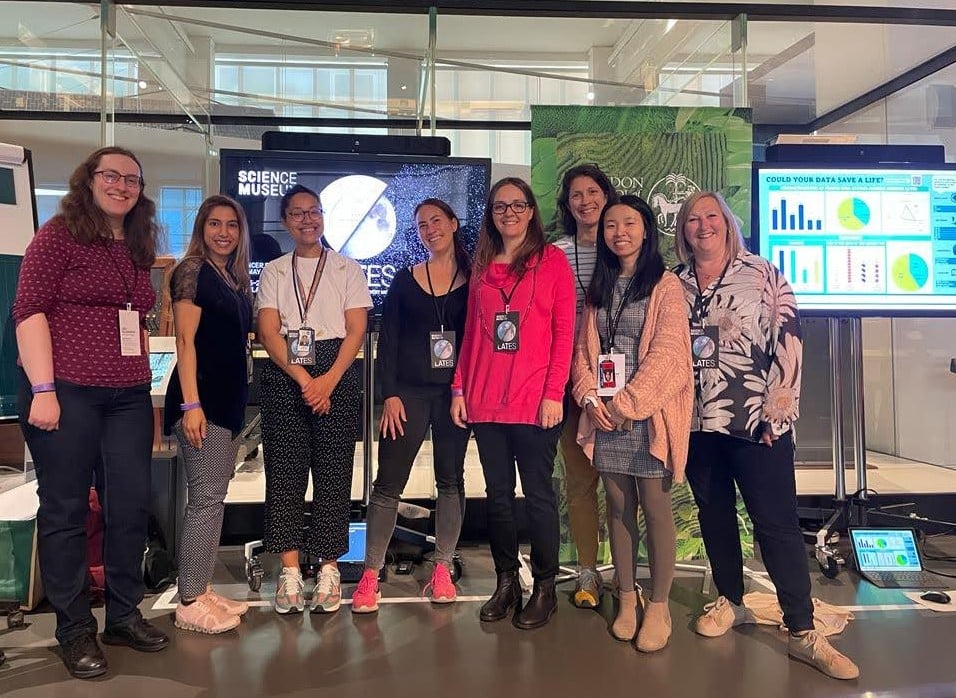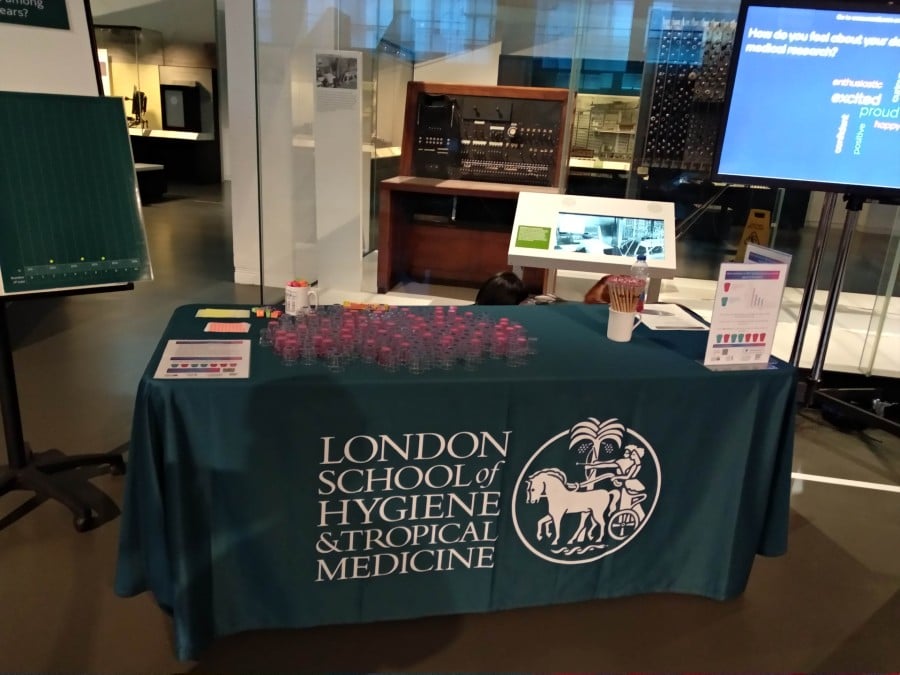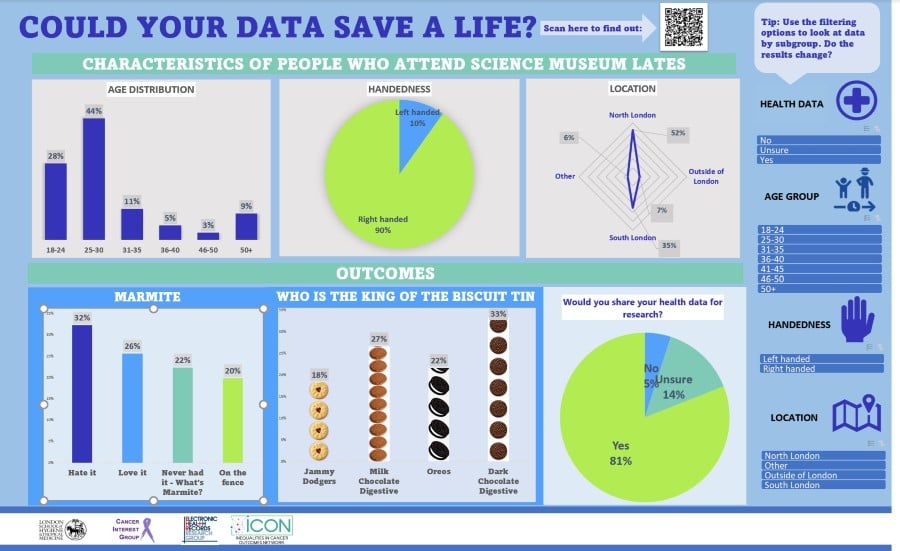On 25 May 2022, staff and doctoral students from the London School of Hygiene & Tropical Medicine, connected by cancer research, participated in Science Museum Lates – an after-hours opportunity for adults interested in science to engage with leading researchers on a given theme. Find out how they shared the importance of data and what they’re taking away from this experience.
Over 1,500 visitors attended May’s 'Cancer Revolution' Science Museum Late to explore a range of topics related to cancer including: the future of cancer treatment; tackling inequalities in patient outcomes; advancements to make surgery more precise and reduce the need for follow-up surgeries; the benefits of home testing kits; and more.
LSHTM staff and doctoral students across the Inequalities in Cancer Outcomes Network (ICON), Electronic Health Records Research Group, Beyond Cancer Group and Cancer Interest Group took this opportunity to demonstrate, through a range of activities, the real-world applications of their research involving big data and why data is so important to advancing cancer treatment and improving patient outcomes for all.
At LSHTM we use large routinely collected datasets (also known as big data) to understand cancer and investigate how factors (individual, biological or clinical) along the cancer patient pathway impact outcomes. Our results enable us to provide information to help policy makers and health commissioners make decisions, develop interventions or prioritise areas that can be lifesaving.
Engaging the public in population-based cancer research
The LSHTM Lates stall consisted of two main activities which explored data through a random sampling activity and data visualisation. The random sampling activity looked at a hypothetical population to explore ‘How common is human papillomavirus (HPV) infection among women aged 25-44 years?’. Visitors were challenged to create their own population-based study and compete against others to see how effective their study was. Starting with a hypothetical population of 200 cups, which represented women aged 25-44 years, visitors were asked to select a random sample of 20 cups and assess how many individuals were HPV positive. This selection was then repeated, but this time the team introduced a bias in the form of sweets to influence the sample selection. Visitors swayed by the sweets unknowingly selected cups with a higher proportion of HPV positives, therefore giving an inflated rate of HPV and skewing results, demonstrating the importance of random sampling in research.
"It was great to step out of my day job and speak to members of the public about my research and I was encouraged to hear so many questions about HPV and cervical cancer. However, it emphasised that we, as a scientific community, need to continue to work hard to explain the importance of our research to the public."
Clare Gilham, Assistant Professor
The second activity looked at data visualisation. Visitors completed a simple online survey collecting the characteristics of people who attend Science Museum Lates (age, handedness, where they had travelled from) and the divisive questions, ‘Marmite: love it or hate it?’ and ‘who is the king of the biscuit tin?’ The survey data was pulled real-time into an interactive visualisation which allowed visitors to view or manipulate data by subgroup to see what effect this had on the results. Although the survey questions were designed to be neutral, this activity demonstrates what can be understood from data representing a ‘population’ (in this case the attendees of the event) and how looking at the results across factors can tell a story, reveal a pattern or build a picture. It was also a way to show how removing sections of the data would influence the results and therefore why access to data is so important for understanding what is happening across a population, to reveal where there are issues and how best to target them. In our example this may have been which age group were more likely to eat Oreos, but in our research, this may be which age group are less likely to receive optimal treatment for cancer.
“It was fantastic to see so many people getting involved in real-time data collection and visualisation at this event. It was also fascinating to speak with members of the public about our research and hear their questions and views. At ICON, as our researchers work with data and statistics, public engagement is so important as it reminds us of the true beneficiaries of our work and helps keep patients at the heart of what we do.”
Yuki Alencar, Research Group Manager, ICON
Staff and students were able to engage in conversations with visitors about our research and the importance of population-based health data. Visitors were also invited to share their views on how they feel about their data being shared for medical research by contributing to a word cloud. In addition, on the night Laura Woods, Associate Professor, joined cancer researcher and founder of Black in Cancer, Sigourney Bell in a panel event entitled ‘How can we beat health inequality?’ which addressed questions from the audience on tackling inequalities in patient outcomes.
LSHTM project team: Yuki Alencar, Nourah Alsheridah, Kirsty Andresen, Naomi Asantewa-Sechereh, Helen Blake, Clare Gilham, Arron Gosnell, Suping Ling, Camille Maringe, Laura Viviani, Laura Woods.


